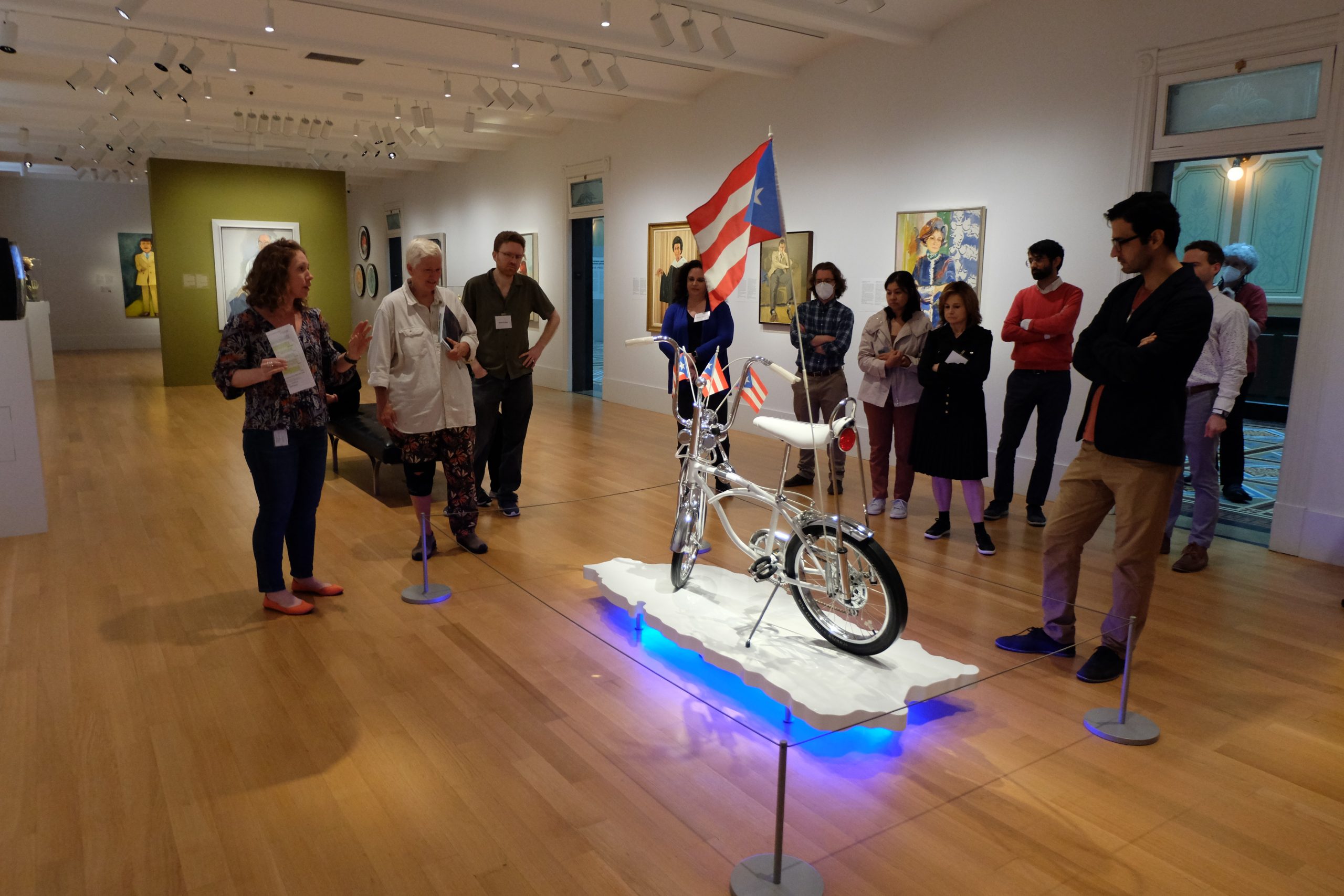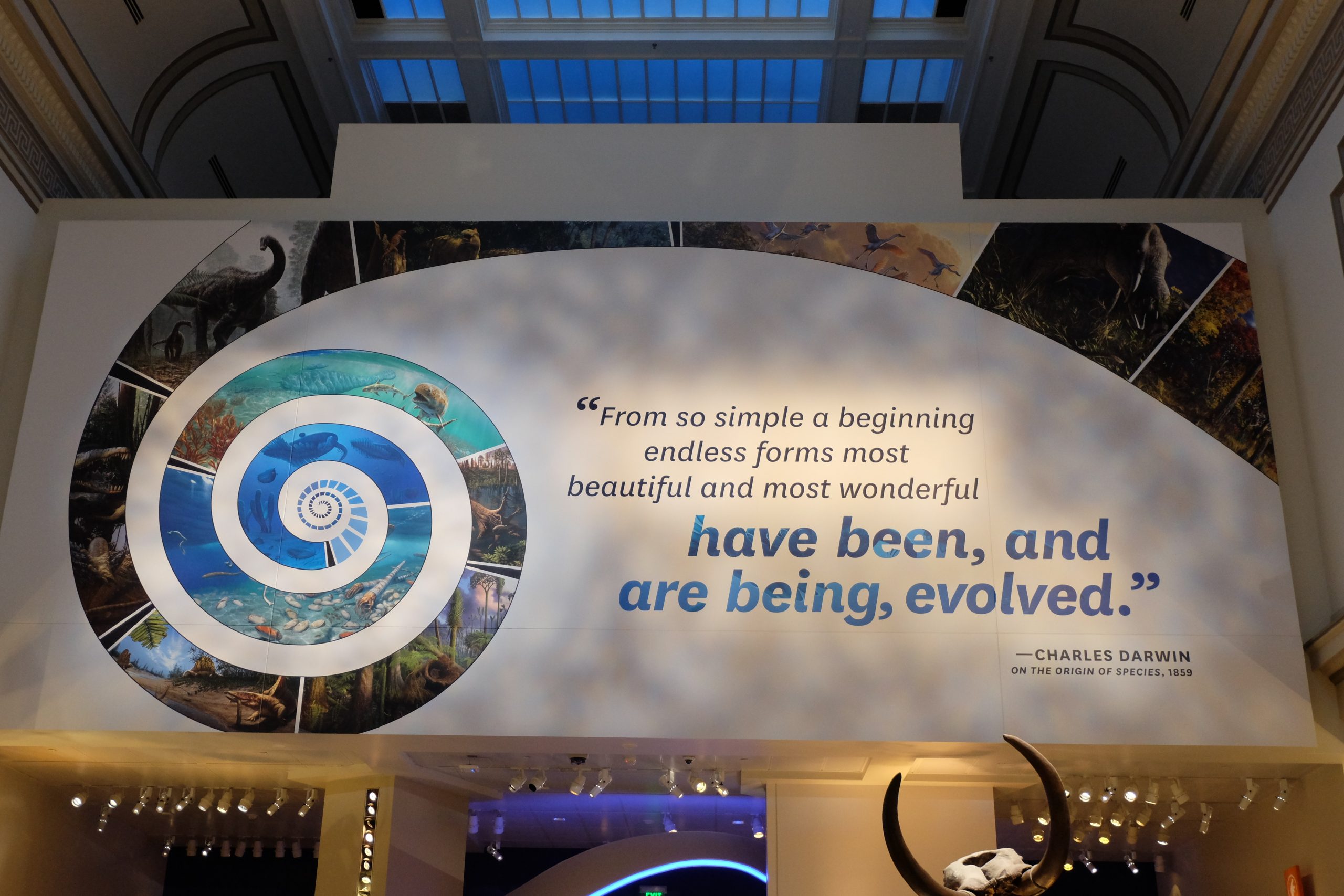As soon as the Smithsonian Faculty Fellowship cohort arrived at the Donald W. Reynolds Center…
By Professor Alzira Lena Ruano, Photography
On Wednesday morning of November 15th, the Photographic Expressions class meets on the steps of the south entrance to the National Portrait Gallery. We are participating in the National Portrait Gallery’s Student Program and will be admitted to the museum before it opens to view the temporary exhibit Kinship. We have the entire exhibit to ourselves and are accompanied by a wonderful Gallery Educator who is guiding our experience offering in-depth knowledge about the artist and the photographs on display.
The Kinship exhibit inhabits seven rooms and features eight artists, all of whom offer visual mediation on this notion, sharing “…their perspectives on how memory, archive, and community form a symbiotic relationship between artists and subjects.” We focus on the four artists that are photography-based. The central corridor houses Thomas Holton’s ongoing photo series The Lams of Ludlow Street. The center gallery to the right is Latoya Ruby Fraiser’s five-year-long photo series “Flint Is Family In Three Acts.” On the opposite side of the corridor in the center gallery is Jessica Todd Harper’s photos series that spans more than 20 years. To the right of this gallery is Jess T. Dugan’s long-term project “Family Pictures.”
All semester the students have been learning about visual language and how core compositional elements of photography aid in expressing a particular view. The students were not informed about the particulars of the Kinship exhibit, artist, or artworks so that they would have a cold read of the photographs. As we entered each room, the students were first given some time to walk around and look at the photos, as part of the See, Think, Wonder, Strategy. Following the field trip, students submitted a proposal for their final Mini Series Assignment, referencing one of the photo series as a source of inspiration.”
Here are some comments from the students.
“…[T]he artist that I was most taken by was Jess T. Dugan. We rarely get any representation of these intimate family moments of kinship as queer people, being able to see a loving family that is happy and thriving, gives me hope that I can also have a future with a loving family. We hardly ever see elderly trans people in real life, let alone represented in a gallery space. Seeing their work, and more importantly, being able to see their family, gives me hope that I might also be able to thrive, have a family, and experience that kinship for myself.”
“I hadn’t looked at photography that way before. Some of the artists we touched upon have become some of my favorite photographers- Thomas Holton and Jessica Todd Harper especially.”
“I want to acknowledge the National Portrait Gallery trip we took to see the Kinship exhibit. When I saw Latoya Ruby Fraizer’s work dedicated to capturing the Flint, Michigan, water crisis, I questioned it a lot. It wasn’t my favorite at first, but I learned from her approach to raising awareness. The generations of families she took photos of broadened my perspective on ways to connect with humanity. You don’t have to show people’s worst moments in order to acknowledge their struggles. Sometimes it just takes understanding that they are human and do normal day-to-day things to draw you in and see something bigger.”
“When we went to the National Portrait Gallery, I gravitated towards Latoya Ruby Frazier and her work about the Flint, Michigan, crisis. I saw her work digitally and didn’t get the same feeling as seeing it in person, it was more lively that way. When I came in person, I didn’t get why she portrayed the water crisis in a subtle and unalarming way, but now that I’m planning out the concept of how I’d like to capture my younger brother, I get it.”





This Post Has 0 Comments